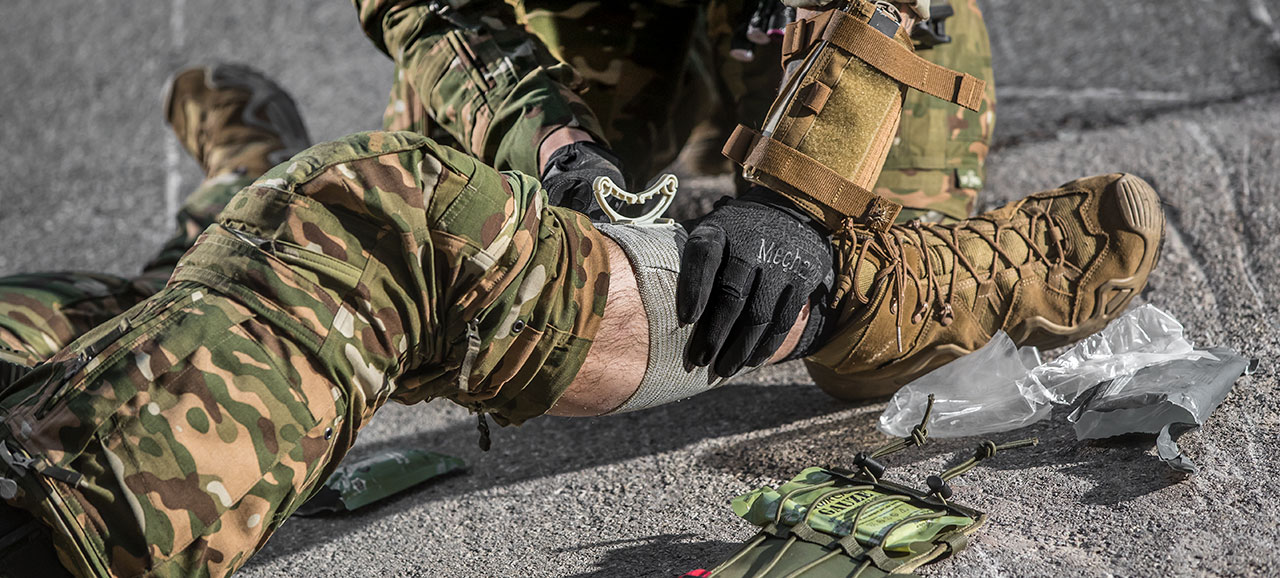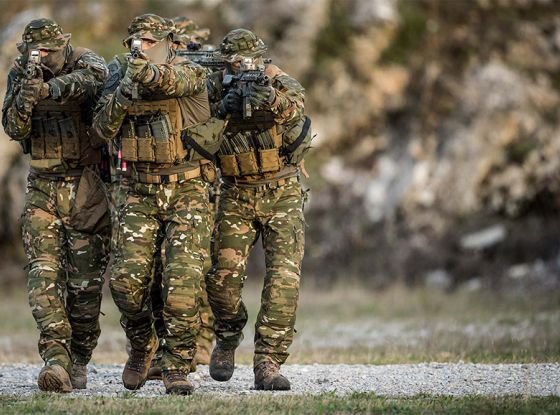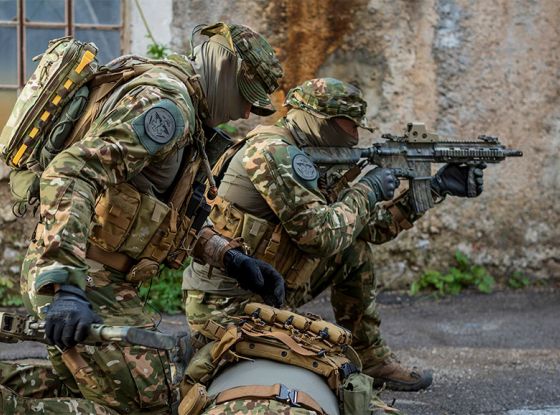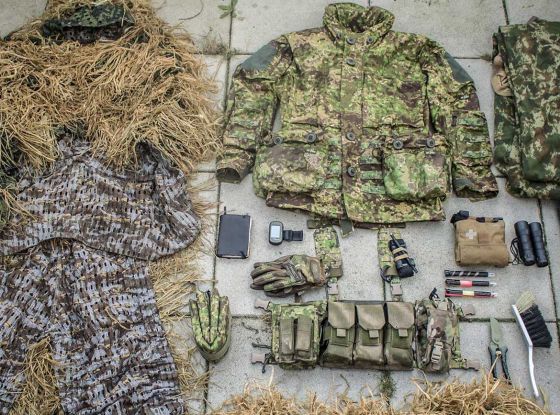You followed all the steps of the MARCH algorithm to save a combat casualty’s life. Now it’s time for the PAWS portion, which is what you’ll use to help make sure the casualty has some kind of quality of life afterward. In this post, we’ll talk about converting a tourniquet. You need to know this because, while it’s good to keep your guy alive, it sucks if he loses his leg from a minor wound as a result of you not knowing how to convert a tourniquet. In this post we’ll also answer the question of when to convert a tourniquet if you’re not medically trained.
If you’re already familiar with this topic and just need to refresh your knowledge of it, or if you’re simply interested in learning about a specific step, you can jump to these sections below:
Introduction
Your guy just took a bullet in one of his limbs. Fortunately, it went clean though. But there’s a lot of blood.
Thanks to your TCCC training (and because you’re awesome), you know to put a tourniquet on him.
Then, when the coast is clear, you perform a blood sweep. Next, you expose and inspect the wound site. What you see is a clean minor wound.
Now what do you do? Let him endure the pain of the tourniquet? Or, if evacuation is delayed, will you risk the possibility of him losing that limb?
For more details about applying a tourniquet to the casualty, watch this episode of Combat Medic Essentials.
When to convert a tourniquet
An applied tourniquet should be converted to a haemostatic dressing or to a pressure dressing as soon as possible, provided that three criteria are met (but please be aware that you need medic training in order to properly assess each one):
- The casualty has not gone into shock;
- The wound can be closely monitored for signs of bleeding;
- The tourniquet isn’t being used to control bleeding from an amputated extremity.
Avoid waiting more than two hours after the injury occurs before attempting to convert the tourniquet.
Never attempt to convert a tourniquet that’s been in place for more than six hours if bleeding can be controlled by other means.
If you’re not a trained medic, follow the instructions you receive from command or from a doctor communicating with you via a telemedicine application.
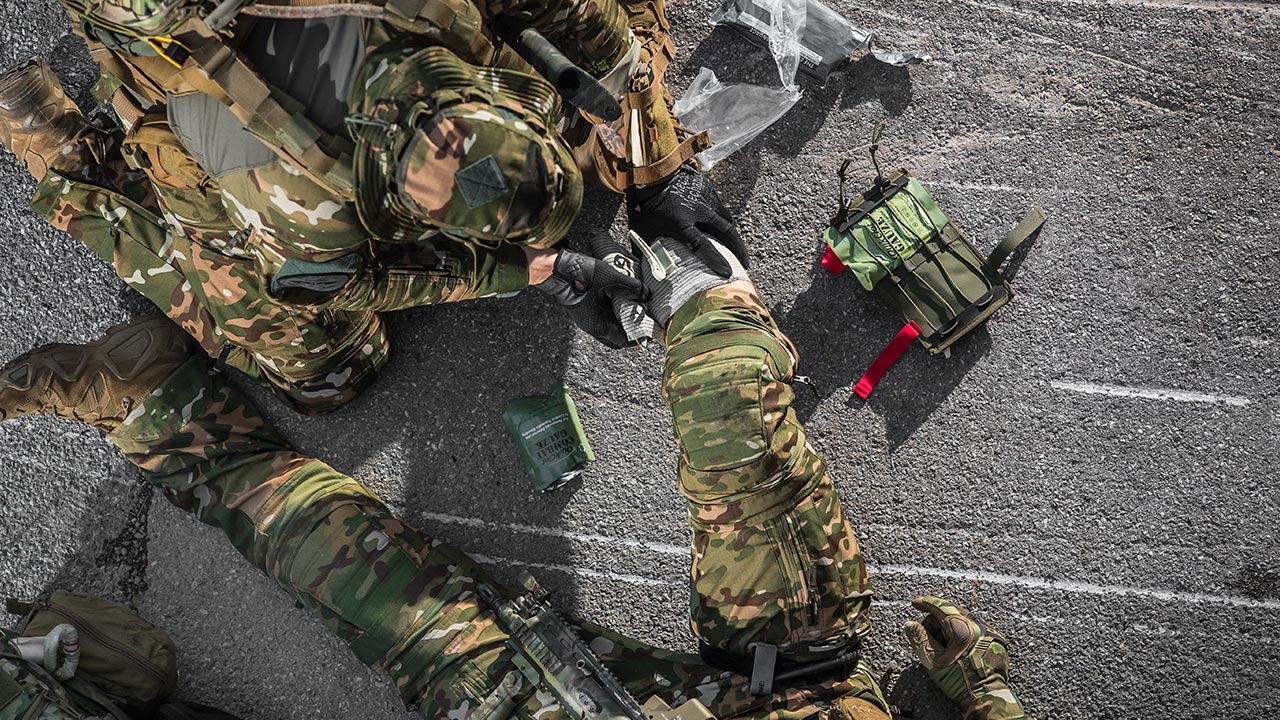
How to convert a tourniquet
The method for converting a tourniquet to either a haemostatic dressing or a pressure dressing is as follows and in this order:
Expose and inspect the wound;
Take some combat gauze or regular gauze and roll it into a power ball
Pack the power ball into the wound at the deepest point you can see or feel;
Maintain constant pressure on the packed-in power ball for three minutes (or as the gauze’s label instructions direct);
Apply a compression bandage (such as an Israeli dressing) to make sure the power ball stays in place.
After forming the power ball, tamponading the source of bleeding and filling up the wound,you might have dispensed gauze left over.
If so, place that unused extra material atop the inserted power ball before you apply the compression bandage.
On the other hand, you might have failed to dispense enough gauze to fill the wound.
In that event, grab the extra gauze you need and add it to the dressing you started so that you end up with one big enough to completely fill the wound.
Keep in mind that bullet wounds usually come in pairs, so make sure to check for a downside wound.
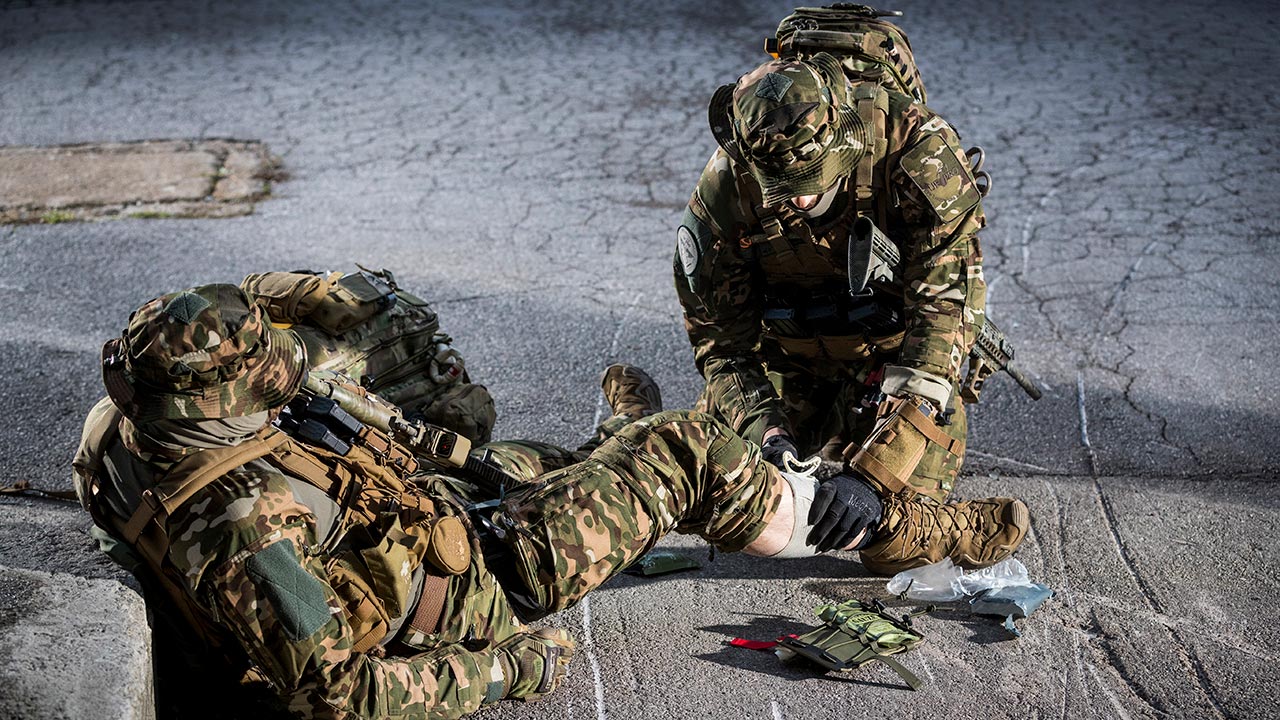
How to loosen a tourniquet
You can loosen a tourniquet by using any of several approved techniques.
A method taught by some is to gradually loosen it over the course of a full minute.
The reason they recommend going slow is to prevent blood in the affected artery or vein from instantly putting full pressure on the clot.
The idea here is that a gradual reintroduction of full pressure will avoid rupturing or dislodging the clot.
Others (and I include myself among them) teach that a tourniquet should be loosened rapidly, completing the process in a matter of just a few seconds.
They advocate this approach in order to test the strength—and survivability—of the clot.
Hitting the clot right off the bat with full-pressure arterial or venous blood flow will reveal whether it’s going to hold or give way.
The indicator of clot weakness is the wound will start oozing blood again.
There’s also a third way to skin this CAT. Loosen the tourniquet’s windlass gradually over the span of a minute, but watch for signs of bleeding while you loosen.
Continue to keep an eye open for bleeding during the next few minutes after loosening. If you see bleeding, immediately retighten the tourniquet.
Always leave a successfully loosened tourniquet positioned 2 to 3 inches above the wound in the event bleeding starts up again before the casualty is handed off to the field clinic or base hospital.
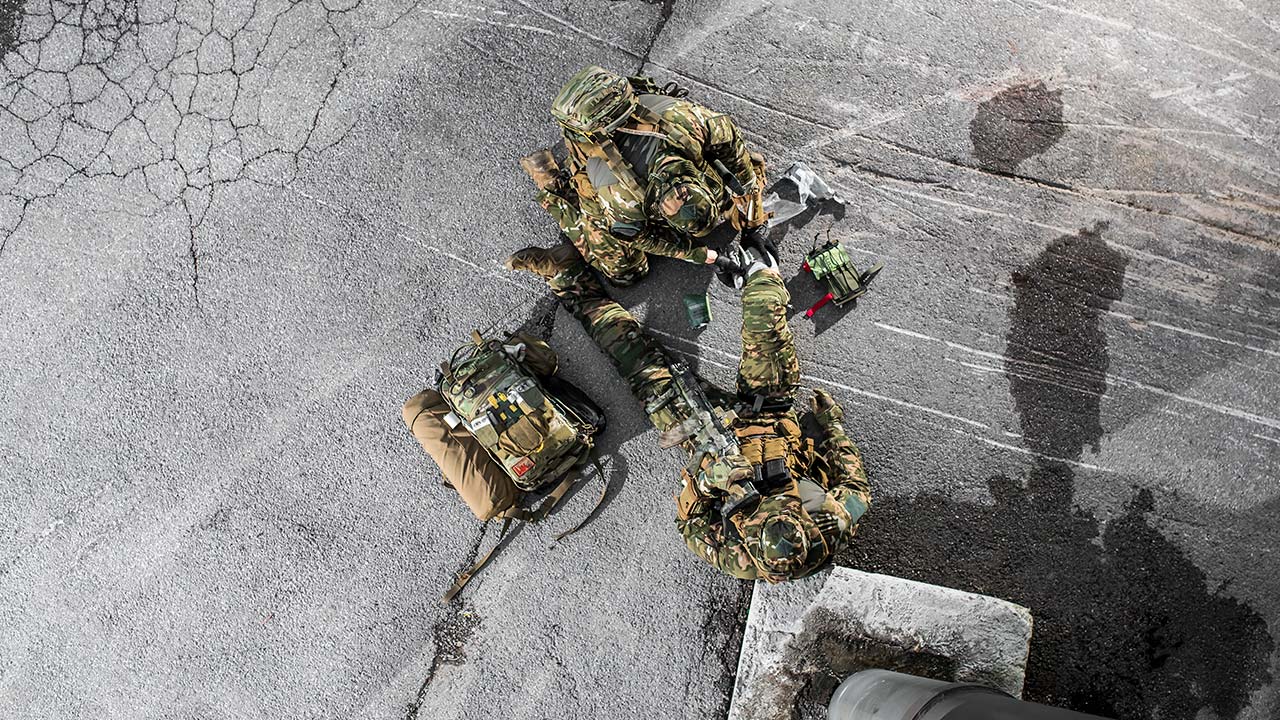
Conclusion
The conversion of a tourniquet to either a haemostatic dressing or pressure dressing should be as soon as possible after the injury or wound occurs.
The longest you as a non medical personnel can wait after applying the tourniquet before converting is two hours.
Go beyond that time and the likelihood your guy will suffer serious consequences increases dramatically.
Those consequences include the potential for renal failure, shock, or rhabdomyolysis (think CrossFit workout while on cocaine and you’ll know what rhabdomyolysis is).
Not every attempt to convert will be successful.
If the wound starts bleeding again, try to figure out what went wrong. The problem could be in the dressing. If so, start over and redress the wound.
Repeat, if necessary.
But there comes a point where you’ll need to reconsider your intervention strategy.
Because, if you redressed the wound 10 times after 10 conversion failures, continuing down that exact same path will put your guy at risk in a totally different way—and you need to be prepared to change your game plan accordingly.
Let me leave you with this fun fact: Periodic loosening of a tourniquet in order to perfuse the limb is nonsense, so stop doing it.
This practice makes as much sense as using a tampon to pack the wound.
Hey, do I need to explain to you what tampons are used for? Well, it sure isn’t for plugging a wound.

